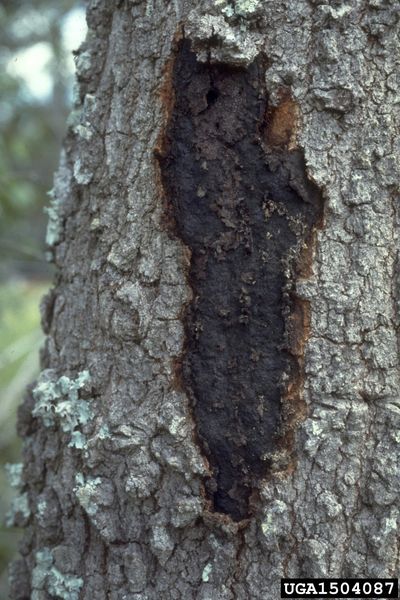What is Hypoxylon Canker Disease?
This is a disease caused by the Hypoxylon canker fungus, actually a group of fungi species in the Hypoxylon genus. Infection by these fungi causes the canker disease, a common issue in hardwood trees. The fungi are generally opportunistic, meaning that they tend to attack trees that are already weakened or diseased. The disease is not a major problem for healthy trees. The damage caused by Hypoxylon canker disease is usually extensive. Once it gets into the trunk of the tree, it is most often fatal. Hypoxylon fungi spread spores as they are released into the air after wet and rainy weather. If the spores land on another tree and conditions stay moist and warm for a couple days, it may infect that new tree. Infections occur at wounds and breaks in the bark.
Identifying Hypoxylon Canker on Trees
Any kind of hardwood tree can be infected by Hypoxylon fungi. Trees that are most susceptible have been stressed by poor conditions like drought, root damage, or other diseases. Oaks are often victims of this disease and in the Midwest, it is the number one cause of early death in quaking aspens. The main symptom of the disease is the presence of cankers on branches and the trunk. They are often first seen at galls, wounds, and branching unions. The cankers when young are smooth and yellow, orange, or brown in color. As they get older, the centers of the cankers turn gray and white and look blotchy, while the edges stay yellow or orange. Two-year-old cankers will also have gray pegs under the bark. The oldest cankers have decayed wood underneath, which often looks black as if it has been charred by burning. There may be an infestation of wood boring insects and holes from woodpeckers. In diseased trees, you may also see smaller leaves, yellowing leaves, reduced growth in twigs, and a thinner canopy. There can also be a large number of dead twigs and branches on an infected tree.
Hypoxylon Canker Control
The best thing you can do to manage this disease is to prevent it. Treating Hypoxylon canker is not currently possible, as there are no fungicides that kill the pathogen. For prevention, start with keeping trees healthy. Make sure they have the best conditions for soil, water, and nutrients as well as are free from pests and other diseases. If you already see signs of cankers on the branches of a tree but not the trunk, you may be able to save it with pruning. Trim off the affected branches 8 to 12 inches (20-31 cm.) below the cankers. Also, trim branches with visible injuries that could be vulnerable to infection. Destroy the diseased branches by burning them and disinfect tools before using them again. If you have a tree with cankers in the trunk, it’s best to remove and destroy the entire tree to keep the disease from spreading to others.
